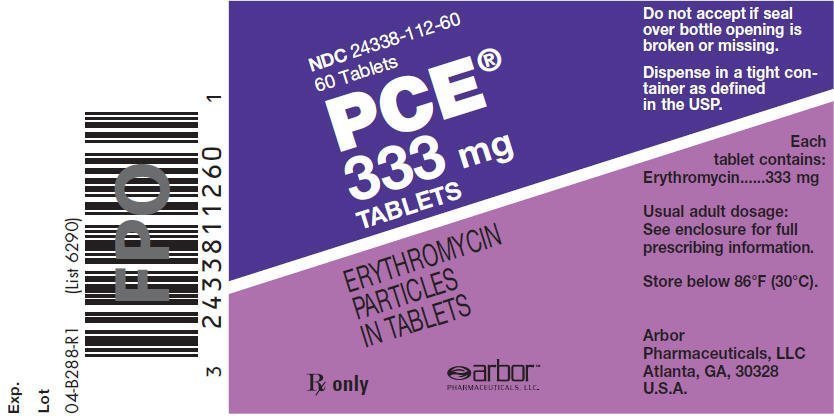
Aspirin 80 Mg
Aspirin is a common drug for relieving minor aches, pains, and fevers.

Antibiotic medicines can cause diarrhea, which may be a sign of a new infection. Do not use anti-diarrhea medicine unless your doctor tells you to.
Inhibits RNA-dependent protein synthesis at the chain elongation step; binds to the 50S ribosomal subunit resulting in blockage of transpeptidation. Serum: Base: 4 hours; Ethylsuccinate: 0. Bacterial infections: Treatment of susceptible bacterial infections, including S. Surgical preoperative prophylaxis colorectal: Colorectal decontamination, in conjunction with other agents, prior to surgical intervention. However, its use should be restricted due to an increased risk of bacterial resistance and limited to patients who cannot receive a tetracycline ie, pregnant women. Data from a study with a limited number of patients suggest that erythromycin may be beneficial for the treatment of Bartonella spp infections Koehler, Tappero
What other drugs will affect erythromycin? Cancerous Tumors Multiple Sclerosis. Manage Diabetes in 10 Minutes Erectile Dysfunction. Tips to Prevent Cold Sores.
| Package | Per Pill | Total Price | Order |
|---|---|---|---|
| 30 Pills | $3.57 |
$106.99
|
Add to cart |
| 60 Pills | $2.95 |
$176.99
|
Add to cart |
| 90 Pills | $2.66 |
$238.99
|
Add to cart |
| 120 Pills | $2.39 |
$286.99
|
Add to cart |
| 180 Pills | $2.16 |
$387.99
|
Add to cart |
Active against many microbes, but clinical applications are relatively few. Apply a thin layer of a 1. Secondary prophylaxis is recommended for 10 years or until age 40 whichever is longer for patients who have experienced rheumatic fever with carditis and have residual heart disease persistent valvular disease. For patients who have experienced rheumatic fever with carditis, but have no residual heart disease, prophylaxis is recommended for 10 years or until age 21 whichever is longer. For patients who have experienced rheumatic fever without carditis, prophylaxis is recommended for 5 years or until age 21 whichever is longer.
Take on empty stomach if possible; PCE Dispertab may be taken with food; base has poorest absorption. Coadministration with HMG CoA reductase inhibitors statins that are extensively metabolized by CYP3A4 lovastatin or simvastatin, owing to the increased risk of myopathy, including rhabdomyolysis. Colchicine is substrate for both CYP3A4 and efflux transporter P-glycoprotein P-gp ; significant increase in colchicine plasma concentration is anticipated when drug is coadministered with moderate CYP3A4 inhibitors; reduce starting dose of colchicine, and lower maximum colchicine dose. Since erythromycin is principally excreted by liver, monitor for toxicity when administered to patients with impaired hepatic function. Inhibits bacterial growth, possibly by blocking dissociation of peptidyl tRNA from ribosomes, causing RNA-dependent protein synthesis to arrest.

Erythromycin is an antibiotic that is used to treat or prevent many different types of infections caused by bacteria. Tell your doctor if you are pregnant. Ask your doctor or pharmacist if you don't understand all instructions. Do not use if the medicine has changed colors or has particles in it. Measure liquid medicine carefully. Erythromycin Base slide 2 of 25, Erythromycin Base.
It was originally discovered in A governmentally-recognized ID which uniquely identifies the product within lovastatin erythromycin 333 mg regulatory market. Erythromycin is indicated in the treatment of infections caused by susceptible strains of various bacteria. Mild to moderate upper respiratory tract infections caused by Streptococcus pyogenes, Streptococcus pneumoniae, or Haemophilus influenzae when used concomitantly with appropriate doses of sulfonamides can be treated with erythromycin. It is effective in eliminating the causative organism from the nasopharynx of infected individuals, rendering them noninfectious. Clinical studies suggest that erythromycin may aid in the prevention of pertussis infection for individuals who have been exposed to the bacteria.
The coating protects the antibiotic from the inactivating effects of gastric acidity and permits efficient absorption of the antibiotic in the small intestine. Ammonium hydroxide, colloidal silicon dioxide, croscarmellose sodium, crospovidone, diacetylated monoglycerides, hydroxypropyl cellulose, hypromellose, hypromellose phthalate, magnesium stearate, microcrystalline cellulose, povidone, propylene glycol, sodium citrate, sorbitan monooleate, talc, and titanium dioxide.
Your medication may look different. If you have questions, ask your pharmacist.
Tell your doctor about all your current medicines and any you start or stop using. Many drugs can interact, and some drugs should not be used together.
Erythromycin is used to prevent and treat infections in many different parts of the body, including respiratory tract infections, skin infections, diphtheria, intestinal amebiasis, acute pelvic inflammatory disease, Legionnaire's disease, pertussis, and syphilis. This medicine is also used to prevent recurrent attacks of rheumatic fever in patients who have had an allergic reaction to penicillin or sulfa drugs. Erythromycin belongs to the class of medicines known as macrolide antibiotics. It works by killing bacteria or preventing their growth. In deciding to use a medicine, the risks of taking the medicine must be weighed against the good it will do.

To describe two cases of rhabdomyolysis in patients taking lovastatin that were precipitated by the use of the newer macrolide antibiotics clarithromycin and azithromycin. In each case, the patients were treated over 5 years with lovastatin and developed rhabdomyolysis that coincided with the completion of a prescribed regimen of a newer macrolide antibiotic. Rhabdomyolysis is a clinical syndrome resulting from the destruction of skeletal muscle that may progress to renal failure. Several drugs have been associated with rhabdomyolysis, including lovastatin, a hydroxymethylglutaryl-coenzyme A reductase inhibitor. Erythromycin is a macrolide antibiotic that may increase the risk of lovastatin-induced rhabdomyolysis.